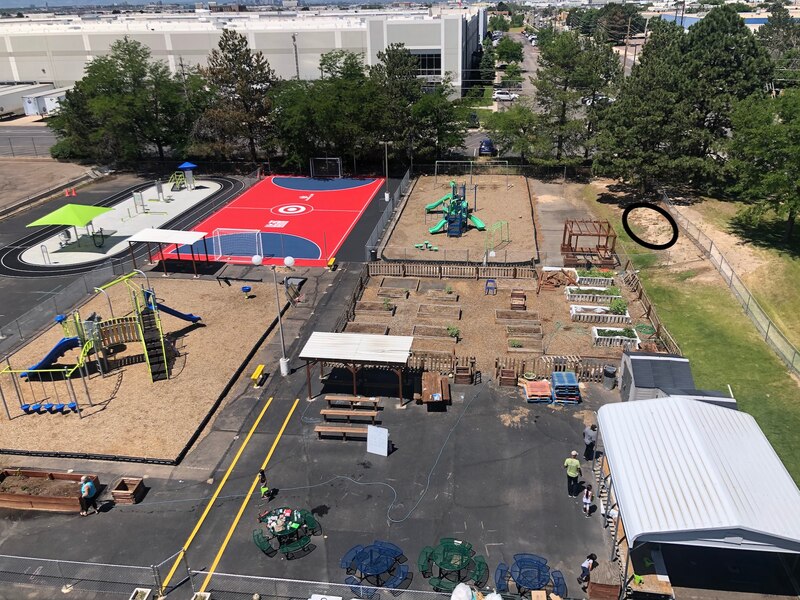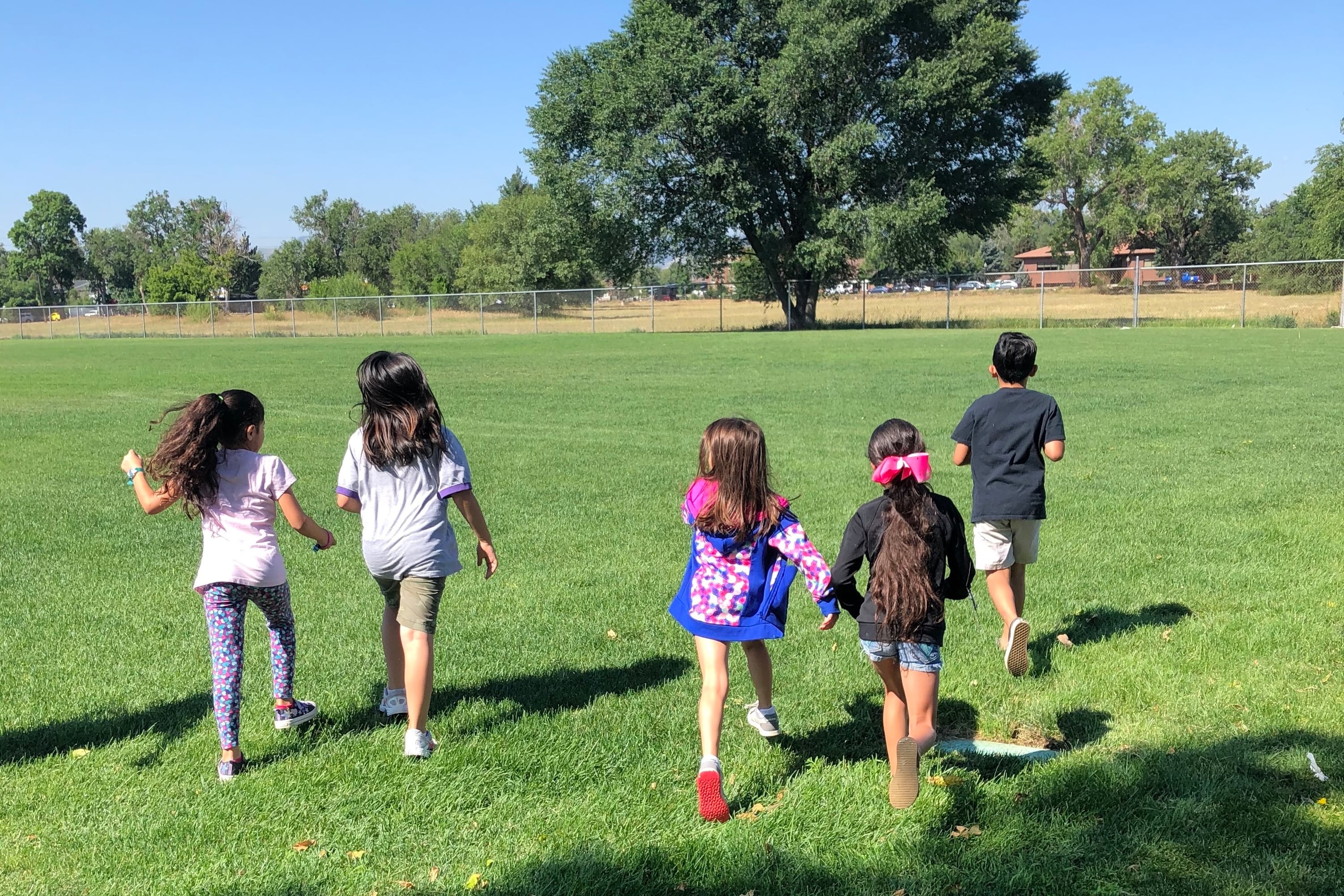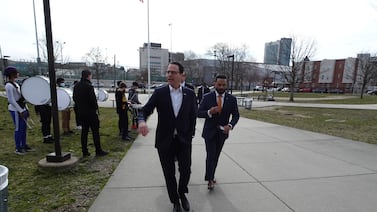Becky McLean, the head of a small charter school in northeast Denver, is anticipating an important delivery around Labor Day: three 700-pound shade structures.
The new semi-permanent canopies are a key part of the school’s plan to keep students outside for a good chunk of the day once in-person learning starts Sept. 8. Preschoolers and kindergarteners will return first, each equipped with a stadium-style seat they can plop on the new outdoor rugs in their fresh-air classrooms.
McLean’s school — a health and wellness-themed school called Academy 360 — is among a host of schools in Colorado and the nation using outdoor learning to reduce the risk of coronavirus transmission as in-person instruction resumes. Top health officials, including infectious disease expert Anthony Fauci, have endorsed the idea and the American Academy of Pediatrics has classified the use of outdoor spaces as a high-priority school reopening strategy.
“It really is unprecedented how many schools are considering this as a serious option,” said Sharon Danks, CEO of Green Schoolyards America, one of four organizations leading a national effort to help schools plan for outdoor learning during the pandemic. “I think school districts are heeding the call.”
Danks, whose group is based in Berkeley, California, said learning outdoors solves some of the innate structural problems of indoor classrooms, such as poor ventilation and a lack of space to ensure students stay 6 feet apart. Plus, educators say that even if outdoor learning doesn’t last — either because of bad weather or COVID-19 outbreaks that send students home — it can give teachers a chance to build face-to-face relationships with students early on.
How schools will use the outdoors this fall ranges widely. Danks said some are planning for nearly 100% outdoor lessons and others are simply adding more outside time than usual. Costs vary as well, with some schools using trees for shade, and $10 hay bales, donated logs, or yoga mats for seating. Others are springing for permanent or semi-permanent furnishings, from shade structures to outdoor chair-desk combinations.
At Red Rocks Elementary School, a Jeffco district school in Morrison, Principal Greg Isaac told parents in a back-to-school presentation, “For the price of one student coming to our school, we could transform our campus not only for this fall, but for years to come.”
Last year, average per-pupil funding in Colorado was about $8,500.
He listed nine outdoor spaces with names like “Juniper Lane” and “Raccoon Gulch,” saying, “These are sustainable for the elements. We can do cheap seating ... It can bring us outdoor safety. We’ve always wanted to be more like Finland. Let’s do this, guys.”
This summer in the 31,000-student Boulder Valley district, administrators identified potential outdoor learning spaces at or near every school, and bought tents for some schools without air conditioning. While district leaders later switched from a hybrid model to fully remote learning at least through late September, it’s possible some schools will experiment with outdoor classrooms if in-person instruction resumes.
Some of Colorado’s large districts aren’t actively pursuing outdoor learning. Referencing winter weather, Aurora Superintendent Rico Munn said at a July school board meeting the district hadn’t considered outdoor classrooms because “come November, that’s no longer an option. We want to make sure whatever our plan is, it’s a plan that can stay consistent as much as possible throughout the school year.”
In the Cherry Creek district, where some students started in person last week, a spokeswoman said teachers may take students outside “on occasion,” but that the district isn’t planning to use the outdoor classroom model.
A spokesperson for the Denver district, where students will learn online through mid-October, said the current focus is on providing rigorous remote instruction, but outdoor learning may be considered later.
At Academy 360, which isn’t subject to the district’s reopening plan because it’s a charter school, two teachers were especially interested in outdoor learning even before the coronavirus.

One of them, Arizona Alli, who goes by Riz, said, “Fortunately or unfortunately, the pandemic helped us along in the planning.”
Last spring, the school won a $15,000 grant from the Denver-based organization RootEd to pay for outdoor classroom equipment, including shade structures, internet hot spots, screens and projectors, and stadium seats. The school, housed on two floors of a four-story office building, will create four outdoor classrooms plus an area for small-group lessons on its adjacent asphalt play area.
“We are well positioned to do something a little bit different,” said McLean, the school’s director. “We’re small, we’re in a non-district facility, and we do serve some of the most vulnerable students in the district.”
About 80% of the school’s 200 students qualify for federally subsidized meals, a measure of poverty.
McLean said the school will start by bringing back about 80 preschoolers and kindergarteners for in-person learning Tuesday through Friday. They’ll spend part of the day outside, but will have classrooms to fall back on inside — for example, when preschoolers nap in the afternoon. Children in higher grades may return for in-person learning later in September, but school leaders want to see how things go with the younger students first.
McLean said establishing routines and expectations for the children from the get-go will be critical for successful outdoor learning — just as it is for indoor instruction. Danks, of Green Schoolyards, said teachers sometimes assume that holding class outside will be more unmanageable than inside, but that research shows outdoor landscapes can reduce stress and increase focus.
Sixteen miles directly west of Academy 360 is another school with ambitious outdoor learning plans this year: Peak Expeditionary School in Jefferson County. Also small with nearly 70% of students eligible for subsidized meals, students there will spend at least three hours a day outside once in-person school starts Sept. 8.
They may have lessons under the black locust tree in the school’s courtyard, in the small outdoor amphitheater next to the building, or on the large field by the playground. They’ll carry backpacks with supplies for any setting: a yoga mat, a double-sided white board, composition books, and school-provided laptops to name a few.
Tim Carlin, a longtime outdoor education advocate who goes by the title “Principal of Fun,” said Peak’s outdoor emphasis aligns with the school’s philosophy, but the main driver this year is COVID-19.
“The push for outdoor learning is really for the safety of our kids,” he said. “A lot of people are concerned about indoor air.”
But using outdoor spaces instead of classrooms can be a major culture shift, he said. “You’re gonna sweat outside … It might rain and you have to prepare for that.”
Plus, with some students learning remotely, teachers have to ensure they have the right technology to make sure students at home can see and hear outdoor lessons. To help address that, Carlin said the school paid to install a special receiver to ensure the school’s Wi-Fi signal would cover the whole campus.
Joan Dizen, whose three sons attend Peak, said she’s grateful for the school’s outdoor learning plans. Before moving to Colorado a year ago, her family lived on a remote island in the Philippines and most of her sons’ education took place outside, at the beach and in the jungle.
“I’ve seen firsthand my kids learn better when they are outdoors,” she said. “I think learning through nature and being outside goes hand-in-hand with what they learn academically.”
She also thinks educators’ flexibility in switching between indoor and outdoor settings will rub off on the kids.
“It gives them permission to say, ‘Hey, I can adapt to whatever situation we’ll be in,” Dizen said.







